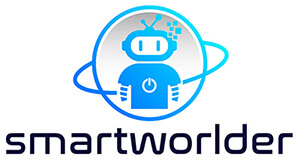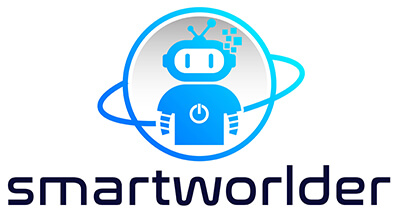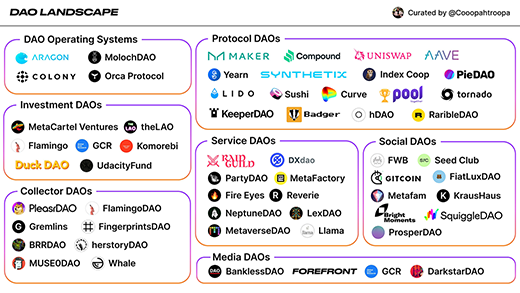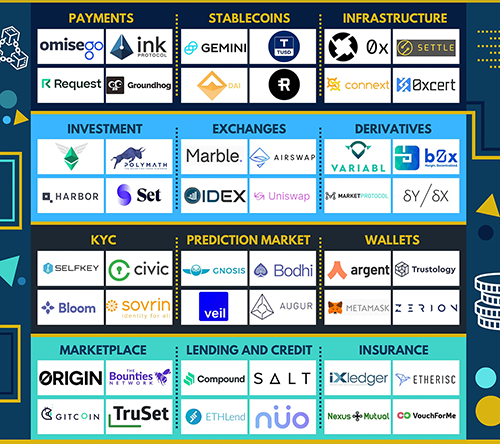Web3 Explained
Content
Web3 represents a shift from centralized platforms and intermediaries to decentralized networks and protocols, with more direct interaction and control by users. While Web3 is still in its early stages, it has the potential to transform the internet and create new opportunities for innovation, collaboration, and economic empowerment.
Web3, also known as the decentralized web, refers to a new generation of internet technology that aims to create a more secure, transparent, and equitable online environment. Proponents of the decentralized web propose to build it on a foundation of blockchain technology, which allows for the creation of decentralized applications (dApps) that run on a peer-to-peer network, without a central authority controlling their operations. Web3 is all about data ownership and the tokenization of data and has the potential to enable a more secure and private internet experience, as well as enabling new business models and financial instruments.
In the traditional web (Web 1.0 and 2.0), users interact with centralized applications and services that are hosted on servers controlled by a single entity. This means that users have to trust the central authority to handle their data and transactions securely.
With Web3, decentralized applications run on a decentralized network of computers, rather than a single server. This means that the application is not controlled by a single entity, and users can interact with it directly, without the need for intermediaries.
Web3 technologies, such as blockchain and smart contracts, have the potential to revolutionize a wide range of industries, including finance, supply chain management, and voting systems, by enabling more secure and transparent interactions between parties.
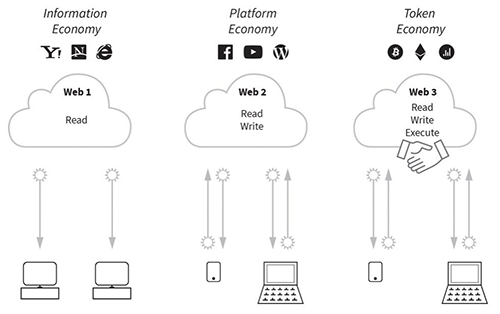
Let’s take a look at how we got to Web3.
Web 1.0 – Decentralized and Open Protocols
The first generation of the internet, which emerged in the early 1990s, was primarily focused on delivering information and content through static web pages. Web 1.0 lasted about until the mid-2000s and was mainly about linking static content across the Internet. The goal was to bring digital information to end users and make it searchable. You could do some basic shopping. It's when Amazon sold only books.
This was a largely read-only web, where users could consume content but had limited ability to interact or contribute to it. Web 1.0 consisted mainly of websites with text or image content with clickable hyperlinks to other pages, built around open protocols like TCP, IP, SMTP, and HTTP.
In this context, ‘open’ means that these protocols were controlled by the Internet community. Most participants were consumers of this content, served up by a motley group of developers.
Web 2.0 – Increasingly Centralized With Proprietary Protocols
The second generation of the internet, which emerged in the early 2000s, was characterized by the rise of social media, e-commerce, and other interactive web applications. Web 2.0 has been focused on delivering dynamic, personalized content and services through large centralized and for-profit platforms like Facebook, Google, YouTube, Twitter and Amazon. While users had more ability to interact and contribute to content, the platforms themselves were still largely centralized, with a few big players controlling much of the online ecosystem.
As the software of these services began to outpace the capabilities of open protocols, a second layer of proprietary, closed protocols were built on top of them. This trend was accelerated dramatically with the explosive growth of smartphones, which run almost exclusively on mobile apps.
A key development that happened in Web2 is the rapid centralization of services, often inside closed communities, and running on the servers of large Internet companies. On the upside, this has allowed billions of people access to amazing technologies and, for better or worse, become ‘creators’ and consume and share any information they want (assuming you don’t live in a totalitarian state).
On the downside, large Internet companies have amassed unilateral power over important questions like who gets network access, who gets thrown off, how revenue is divided, what features are developed and stay supported, how content is distributed (such as Facebook’s algorithms deciding what makes it to the top of your feed) or how user data is secured.
Security, Privacy and The Big Data Grab
Of course, all these great free apps and services aren’t altruistic acts performed by Internet companies. As the saying goes: “If you’re not paying for it, you’re not the customer. You’re the product.” Specifically, the product is your data. And it is captured (often without your consent) and stored in large, centralized databases.
Without going into the revenue models of large Internet companies like Google and Facebook, in a nutshell it works like this: The more data they can capture about a user the better they can personalize the content and ads to show them. This leads to more pageviews, clicks and ultimately more advertising revenue.
One could say that the centralization and exploitation of user data is at the core of Web 2.0. As is the recurring stream of announcements about data breaches. Wikipedia keeps a list of large data breaches. For instance, in 2019, a collection of 2.7 billion identity records, consisting of 774 million unique email addresses and 21 million unique passwords, was posted on the web for sale.
Identity in Web3 Works Differently
Web3 can remedy the online privacy failures that prevail in today’s data-sucking, centralized systems. Secure digital identities will be the tool to make that happen.
Current online identity verification relies on usernames, passwords, email addresses, date of birth, social security numbers, security questions, etc. There is little to none oversight on how this personal information is stored and shared (or sold).
Decentralized identities built on blockchain (which means they will be tied to the wallet address of the user interacting with the application) allow web users to maintain full control over their private data and grant access to it through private keys. Importantly, an identity can be seamlessly used across applications if the user chooses to use the same wallet.
Let's look at an example: For instance, you are interested in your ancestry line.
You swab your mouth or nose or whatever, and you send that to the company that analyzes it. You pay $50, and after a few weeks, you get information that Mike is half Irish, 25% German and so on, so forth. That information is basically now resting with that company that did genetic profiling of you. They probably are going to monetize that in many different ways, e.g. selling their collecteddata in bulk to a pharma company because the pharma company will need to test the efficiency of their new drug designed on different genetics. And rather than having trials, they can do that nowadays through very sophisticated simulations. You gave up your essential data, your genetic makeup, just because you wanted to know your ancestry line, and other people are making money out of that.
So with Web3, we have a data marketplace, and that data is not the genetic test company data. It is still Mike's data and he is able to basically list that as a non-fungible token (NFT). As a data parcel, it can be divided or it can be access controlled. So it means that you can give access to certain portion of your genetics. And you can give that to only people or the company that you feel will meet the profile that you like to work with, and each time somebody accesses or uses that data, you are going to get paid yourself. And you can basically dictate how that data is used, or how long, for what application, by whom and all that.
The Key Components of Web3
There are several key components of Web3:
Blockchain: A blockchain is a distributed database that allows multiple parties to securely record and verify transactions without the need for a central authority. In Web3, blockchains are used to create decentralized applications that can operate without the need for a central server.
Smart contracts: smart contracts are self-executing contracts with the terms of the agreement between buyer and seller being directly written into lines of code. The code and the agreements contained therein exist on the blockchain.
Decentralized applications (dApps): dApps are applications that run on a decentralized network, rather than a single server. They are built on blockchain technology and can operate without the need for a central authority.
Cryptocurrency: Cryptocurrency is a digital or virtual currency that uses cryptography for security and is not controlled by any central authority. It is often used as a means of exchange within Web3 applications.
Decentralized finance (DeFi): DeFi refers to financial applications that are built on blockchain technology and operate in a decentralized manner. These applications can include things like decentralized exchanges, lending platforms, and stablecoins.
Decentralization is at the Core of Web3
The key defining feature of web3 will be that developers link content and programs directly to each other, bypassing intermediary organizations and allowing anyone to participate without monetizing their personal data. Thanks to decentralized coordination and public verifiability, web3 will move power from corporations into the hands of communities (we’ll talk more about these Decentralized Autonomous Organizations (DAOs) below).
These decentralized applications (referred to as dapps) will run on blockchain, decentralized networks of many peer-to-peer nodes (servers), or a combination of the two that forms a cryptoeconomic protocol. This term describes a combination of the tools and concepts from computer science that enable cryptocurrency, such as distributed systems and cryptography, and economic mechanisms in the form of incentives.
The role of (economic) incentives is critical for the development and maintenance of public goods like the decentralized networks of Web3. Cryptocurrencies, i.e., coins and tokens built into blockchains, help solve this problem by providing economic incentives for development, much like the incentives for Bitcoin miners.
The result will be open, trustless and permissionless networks. Open means that they are built by an open community of developers with open-source software and accessible by everyone. Trustless describes a network and all interaction among participants that doesn’t require a trusted third party. And permissionless means that none of the participants requires authorization from a governing body. Everyone can access and interact with them (which does not mean that everyone can do what they want – there are rules).
InterPlanetary File System (IPFS)
A key component in building Web3 dapps is a protocol and peer-to-peer network for storing and sharing data in a distributed file system called the InterPlanetary File System (IPFS).
IFPS powers some major differences to today’s web2:
HTTP downloads files from one server at a time — but peer-to-peer IPFS retrieves pieces from multiple nodes at once, enabling substantial bandwidth savings. With up to 60% savings for video, IPFS makes it possible to efficiently distribute high volumes of data without duplication.
The average lifespan of a web page is 100 days before it's gone forever. The medium of our era shouldn't be this fragile. IPFS makes it simple to set up resilient networks for mirroring data, and thanks to content addressing, files stored using IPFS are automatically versioned.
IPFS powers the creation of diversely resilient networks that enable persistent availability – with or without internet backbone connectivity. This means better connectivity for the developing world, during natural disasters, or just when you're on flaky coffee shop wi-fi.
The way IPFS works is that when you add a file to IPFS, your file is split into smaller chunks, cryptographically hashed, and given a unique fingerprint called a content identifier (CID). This CID acts as a permanent record of your file as it exists at that point in time. If you add a new version of your file to IPFS, its cryptographic hash is different, and so it gets a new CID. This means files stored on IPFS are resistant to tampering and censorship – any changes to a file don't overwrite the original, and common chunks across files can be reused in order to minimize storage costs.
Decentralized Autonomous Organizations (DAOs)
In a nutshell, DAOs are online organizations that coordinate activity among a distributed community of stakeholders. They are decentralized because no single individual or centralized party can change rules; autonomous because votes are tallied and decisions implemented based on logic written into a smart contract, without human intervention.
Governance structures determine how an organization makes decisions that align the interests of participants. The challenges with many existing organizational forms, such as corporations, are that decisions are not made in a transparent way and often stakeholders face high barriers to entry to participating in governance.
That’s where DAOs come in. They are supposed to form an emergent governance model for new kinds of organizations built around transparency and inclusion. The principles can be applied to a wide variety of organizations, including non-profits, collectives, cooperatives, and investment funds.
The basic structure of a DAO revolves around a crypto token, tracked on the block chain, that serves as a measure of an individual's stake in the group. In most DAOs, tokens reward participation, guarantee voting rights, and, importantly, are tradable outside the DAO – which means they can accumulate value.
One of the most prominent DAOs, Friends With Benefits, has received a $10 million venture capital investment. The FWB community of Web3 builders and artists has issued one million tokens ($FWB) on the blockchain, about one third of which is retained in a community treasury (to be distributed according to the wishes of the DAO, with a set number disbursed every few months to members, based on contributions like providing liquidity or serving on committees). The rest circulates on the open market. To join FWB, you can buy $FWB tokens or earn them. People who own at least 75 FWB tokens can propose resolutions in binding elections where each token equals one vote.
You can find an excellent introduction to DAOs here.
Decentralized Finance – DeFi
One element of Web3 that is gaining a lot of traction is decentralized finance, which involves conducting financial transactions on the blockchain without assistance from banks or the government.
Decentralized Finance or DeFi (also referred to as Open Finance) describes decentralized financial products and services such as saving, lending, trading, insuring. Imagine a global, open alternative to every financial product you are using today – but accessible online to everyone in the world.
Already, there are DeFi dapps that allow you to lend out money and earn interest, take out a loan, receive investments into your start-up, exchange assets, or create stablecoins – privately issued cryptocurrencies that maintain a stable value relative to another asset, for instance by being pegged to the Euro or U.S. dollar. Stablecoins offer the advantages of cryptocurrencies without the volatility.
Once the rules for a financial product are written in code (a ‘smart contract’) and deployed to the blockchain, DeFi dapps remove intermediaries and run themselves with little to no human intervention. That means financial institutions are removed from the equation in favor of peer-to-peer transactions and automation.
What this means is that, even without a bank account (there are almost 2 billion unbanked adults in the world), consumers can obtain and store cryptocurrency in virtual wallets, send and receive payments from mobile devices, access alternative credit markets, and invest in global asset markets – often without interacting with traditional financial infrastructure at all.
Barriers to Web3
While Web3 has the potential to transform the internet and create new opportunities for innovation, there are several barriers that must be overcome to fully realize this potential. Some of the main barriers to the adoption of Web3 are:
Technical complexity: Web3 technologies, such as blockchain and decentralized systems, are still in their early stages of development and can be complex and difficult to understand and use. This can limit adoption and usability for non-technical users and create barriers to entry for developers and businesses.
Scalability: Web3 technologies can face scalability issues, which can limit their ability to support large numbers of users and applications. This can limit the potential for widespread adoption and slow down the development of Web3 applications and use cases.
Interoperability: The decentralized nature of Web3 can create interoperability challenges, as different networks and protocols may not be able to communicate and work together seamlessly. This can limit the potential for collaboration and interoperability between different Web3 applications and networks.
Regulation: As Web3 technologies become more mainstream, they may face increased regulatory scrutiny and legal challenges, which can create uncertainty and slow down adoption. In addition, the legal and regulatory frameworks for Web3 are still in the early stages of development, and it is not yet clear how they will evolve over time.
User adoption: Finally, one of the main barriers to Web3 adoption is simply user adoption. While Web3 offers many potential benefits, it may take time for users to become comfortable with the new technologies and for use cases and applications to emerge that demonstrate the full potential of Web3. Education and outreach efforts will be critical to increasing awareness and adoption of Web3 technologies.
Also, some groups or individuals who may have concerns about the impact of Web3 and decentralized technologies on their business models or industries, may be skeptical or hesitant about Web3 and try to defend the status quo:
Centralized corporations: Some large corporations, particularly those in industries that could be disrupted by Web3 technologies, may be wary of the potential impact on their business models. For example, banks and financial institutions may view DeFi as a threat to their traditional business models, and could be opposed to the growth of Web3 technologies that enable it.
Governments and regulators: Governments and regulators may have concerns about the potential impact of Web3 on their ability to regulate and control certain industries or activities, such as money laundering, tax evasion, and illicit activities. They may also be concerned about the lack of accountability and regulation in decentralized systems, and may be hesitant to allow them to grow without some degree of oversight and regulation.
Environmentalists: Some environmentalists have raised concerns about the energy consumption of certain Web3 technologies, such as proof-of-work blockchains. They argue that the high energy consumption of these systems could have negative environmental impacts, and could be a barrier to their widespread adoption.
Privacy advocates: While Web3 technologies offer many potential benefits for privacy and security, some privacy advocates have raised concerns about the potential risks of decentralized systems, such as the potential for decentralized surveillance or the use of decentralized networks for illegal activities.
Check out our SmartWorlder section to read more about smart technologies.

